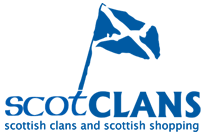A Walk Through Culloden
By John W. Patterson, Editor of the Lion’s Face, Clan Farquharson UK


John W. Patterson
This is a personal account on my trip to the Culloden Battle Field and visitor centre. I visited Culloden on August 12th of this year. For those who have never visited, it is a very solemn place.
Culloden is a historical site managed by the National Trust for Scotland. On 16 April 1746 a fierce and bloody battle took place on this spot near Inverness between the Jacobite army of Bonnie Prince Charlie and the Royal Troops of George II led by The Duke of Cumberland. This was the last stand of Charles Edward Stuart, commonly known as “Bonnie Prince Charlie” or “the Young Pretender”. Bonnie Prince Charlie and his sympathisers wanted the Stuarts on the throne rather than the Hanoverians.
There were 7,000 in the Jacobite army and 8,000 in the royal army. It is thought that around 1,500 to 2,000 Jacobites were killed or wounded in what was a terrible defeat for Bonnie Prince Charlie and his army which was made up of mostly highlanders who were volunteers rather than soldiers. Clans fought on both sides. On the Government side the losses and injuries were a lot lighter at around 300. The battle was over in less than an hour, it was a slaughter. This was the last pitched battle on British soil.
Leaving opinions aside and the circumstances that led up to the battle I would like to focus on my experience. When you arrive at the visitors centre and leave your car your experience begins as you start walking up a sidewalk adorned with Clan names, those that were involved in the battle, alongside their names are their clan crests. When you enter the visitor centre the cafe is to the left, which I found to be excellent and the gift shop. Walking straight ahead you begin the indoor portion of the tour.

Photo’s by John W. Patterson
Upon entering the tour you find large displays on both walls and many interactive displays. There are many exhibits of actual articles from the times with explanations of their significance. I found this to be a great addition to the experience and helps you connect with that awful day and the life the soldiers led. You are free to explore the exhibition in any way, and are not forced down one route, so the narrative is pieced together as you see fit. On one side of the exhibition is the Government side and the other for the Jacobite side. This is interesting as the exhibition does give you both sides of the story and it is up to you what you want to make of it. You start with the lead up to the battle, on one side the events of the Jacobites and the other the Loyalists. So you do end up seeing both sides, there isn’t a bias.
At the end of this part of the exhibition you enter a room with large screens on all four walls. It puts you in the middle of a re-enactment of the battle, you are charged at from one wall and muskets fire from another. The sound is amazing and really gives you the feel of being there. When you exit you see names of known Clansmen who fell during the battle. For me, I saw many Farquharson names and it really brought it home to me and gave me a personal connection to this event and an insight into my family and how brave they were. When you exit the hall you enter into another interactive room with a large animated map of the battle and many hands on displays.

The Walk outside
When you begin the outside portion of the tour you are given a headset with a GPS device. When you walk outside the GPS begins to give you information about the day. As you walk to points the GPS will chime and tell you about the point you are standing and gives you further information on specific people or a side note of the day by a touch on the screen. You immediately get the feeling of the day and as you walk the paths the battlefield the solemnity falls on you.
You can see blue flags that mark the Jacobite line and red flags the mark the Government side. Paths take you to each point and you pass various Clan Stones, these stones commemorate the members of the different branches of the Clan who fought and died on that fateful day in 1746. As well as specific Clan Stones there was also one labelled “Mixed Clans” for all those not listed. You walk by many markers of where certain Clans would have been lined or where certain people would have been standing that day.
In the end I want to say the National Trust for Scotland has done an amazing job with the centre. It should be noted that Culloden is a burial site for many who fell that day and the most respect should be given while walking the field. The feeling you get while walking the field is hard to describe, you are standing on the ground of a battle that had consequences for so many, some very harsh. History could have sent us in quite a different direction if Bonnie Prince Charlie had been successful in restoring the House of Stuart to the British throne.

John W. Patterson is the Editor of the Lion’s Face, Clan Farquharson UK












I was there in July. Fantastic! Very somber…you could almost hear the fighting, the swords, the shouts and the cries. To see the names of some Reids on the wall made it so real for me. I would go again and again.